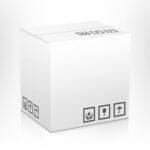Dimensions : Length Width Height of an Object
Length Width Height
Geometrical dimension means dimensionality of any geometrical figure, i.e., long, wide, or high it can be; length is the longest side, width is the shorter one, and height is in reference to the vertical height of the figure. Thus, let us learn more about the length-width-height of figures.
What is Length Width Height?
It is by length, width, and height that one measures an object. In the case of two-dimensional shapes (length and width), it suffices to consider only length and width. However, in three-dimensional situations, including height allows one to consider all three dimensions: length, width, and height. Let us understand the three terms now.

- Length: Length is a means of measuring the distance between two ends-the greater dimension of a figure under consideration which represents how long the object or figure is. Length thus has the linear units as per meter, centimeter, inch, etc.
- Width: Width refers to the smaller measure of an object or figure and describes the bigness of that figure. Width is also denoted in linear units such as meters, centimeters, inches, etc.
- Height or Depth: Whether an object is at rest or in motion where you can tell from a certain line on it, if it has such a reference, the term height also explains according to whether such an object has depth or whether it depends on some reference object. Its height increases as it gets deeper into water; in linear units-meter, centimeter, and inch-it is measured as height or depth.
Width, height, and depth follow the words wide, high, and deep after substituting prepositions for the latter, which are known as synonyms of length. Hence they express the dimensions of an object. Observe the figure given below to see the length, width and height of a cuboid.
We employ length, width, and height measurements to refer to the volume of a geometric body. Length, which is 20 cm, and width, which is 10 cm, are considered horizontal.The height, 15 cm along a vertical dimension, completes the argument.
We usually express these dimensions by writing them out separated by a multiplication sign. By store we mean the dimensioning of the physical point, so one can look at the dimensions on a box, for example, when one intends to purchase a furniture piece.
170 in (height) x 60 in (width) x 45 in (length)
I hope this entry has helped you learn how to measure the dimensions of objects in the world around you.
Don’t forget that you can register free with Panda Scientist to do exercises involving units of measurement, how to find LCM amongst many other things!
Length vs Width
Width is the measure taken across the lateral direction of a plane.
Extent is the property of a body to occupy the space, while breadth is required to refer to the wideness of the body. Considering the body in this case to be a rectangle, our two measurements could be expressed as 8 cm and 3 cm on either side, rendering the matter quite simple regarding that the length of the rectangle is 8 cm and its width is 3 cm.. Look at the rectangle given below to study the distinction between length and width for a shape.

Length x Width x Height
Length, Width, and height are basic dimensions that are considered for finding the volume of a geometric figure-represented here by the rectangular prism or cuboid. Cuboids volume can be defined by multiplying respective cuboid length, width, and height. Length multiplied by width multiplied by height gives us volume of the cuboid. In other words, the capacity or volume of a cuboid or any rectangular box can be measured by the result of multiplication of these three dimensions together. Let this be made clearer with a small example.
Example:The total volume of a cuboid is calculated from the formula l × w × h, where l is length, w is width, and h is height. As far as measurements are concerned, length = 8 units; width = 4 units; height = 3 units.So, the cuboid can be any shape that has 6 faces due to a solid with rectangular faces.
Solution: Calculate the other three, but consider that three faces in any direction are congruent or equal in magnitude. Volume of cuboid =lbh=cx
Volume of cuboid = l (Length) x h (Height) x w (Width)
After substituting the values we get, Volume of Cuboid = 8 × 4 × 3 = 96 units3
Length Width Height of a Box
The dimensions of a box are easily identified – length is its longest side, width is the shorter side, and height is the vertical dimension. View below the figure given for representation of length, width and height of the box.
In measurements, always the certain order is maintained: before any number comes length, then width and at the last height. So a box would always have measurements given in ‘length, width, height’.It refers to dimensions of the length measuring 15”, the width measuring 10”, and the height measuring 3” above, which are dimensions given in these terms: 15” ×10” ×3”.

Conclusion
In every dimension, the other dimensions include the length, the longer side; the width (or breadth), the other shorter horizontal side; and height (or depth), a vertical measurement. These three measurements are used for volume and surface area calculations and to investigate a figure’s relationship in space, either in two or three dimensions.The general order in which dimensions are expressed Length × Width × Height (L×W×H) prevails in geometry, construction, and packaging.
The importance of these parameters lies in the ability to make precise mathematical calculations, such as using the formula L × W × H for the volume of a cuboid. Knowing these dimensions will help to measure in engineering and architecture and, in a practical sense, will apply to furniture or packing boxes.
Please call Panda Scientist or write to us. Further assistance may also be availed on call.







